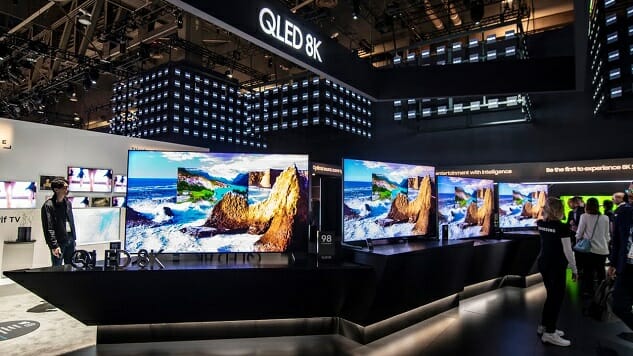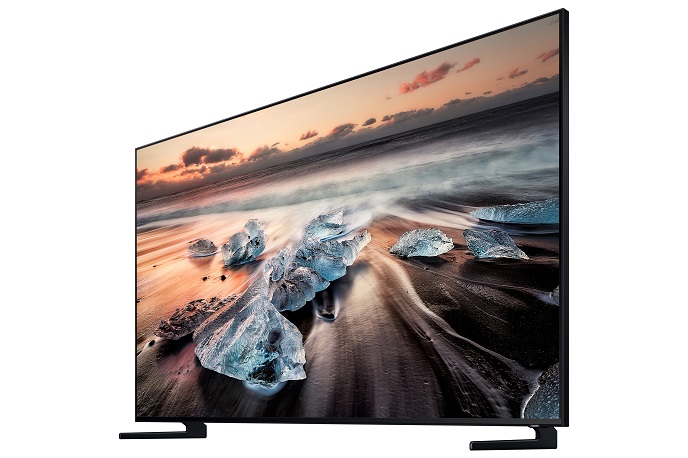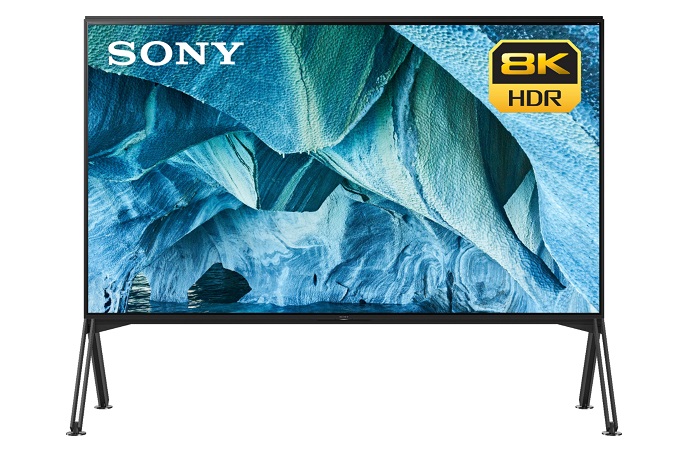A Guide to 8K UHD TVs
A Look at Sony and Samsung's 8K UHD TV Models
Images courtesy of Samsung and Sony Tech Lists 8K UHD TV
You know that 4K TV you just bought? Dump it. Trash it. This one’s garbage, because 8K TVs are already hitting store shelves.
The 8K resolution pumps out 7680 × 4320 pixels, which is four times as many as that new 4K sitting in your entertainment center, and 16 times what you’ll see on that standard HD TV in your guest room. That means 8K images are visibly sharper and clearer than anything else on the market today, and in fact can emit “hyperreal” images that look more realistic than what we can see in the real world with our own eyes. And although there’s not much in the way of native 8K content for us to watch yet, you can find 8K videos on YouTube and other streaming video websites, and 8K TVs automatically upscale 4K content to 8K. So basically you can buy one of these fancy new TVs today and immediately enjoy images so crisp and lifelike that they look more real than real life. We totally understand why that might sound frightening, especially if you make your living in front of a camera.
Far more frightening, though, at least at the moment, is the cost of an 8K TV. As with any brand-new piece of bleeding edge commercial technology, the earliest adopters pay a hefty premium. You can’t buy an 8K TV for less than several thousand dollars, with the largest models weighing in at over five figures. If that makes 8K impossibly expensive for you, well, that just means you’re a regular person. Anybody buying one of these TVs today is either amazingly rich or completely irresponsible with their money. And since TV prices drop quickly these days—compare 4K prices today to just three years ago—it’d be pretty irresponsible to buy one of these things even if you’ve got Jeff Bezos money.
But they do exist. You can buy them. And if it sounds like something you’re interested in, well, here’s some information on the models you can currently take home.
The Samsung Q900 Series

Samsung has dived headfirst into the 8K waters, releasing more models in the US so far than any of its competitors. They’re all part of the Q900 series, which feature quantum dot QLED screens, which means they’re surprisingly thin and flexible enough to install in curved televisions. The Q900s are all 8K UHD smart TVs with HDR, and range in size from 55” to a whopping 98”. And obviously, the bigger the screen, the more damage it’ll do to your bank account.
Here’s the breakdown: the smallest model, the 55 incher, will set you back $3500. That’s currently the barrier to entry for 8K as a whole, as there are no cheaper models of any kind on the market today. Samsung’s 8K menu continues as such:
55”: $3500
65”: $4500
75”: $6500
82”: $9000
85”: $15000
98”: $70000
So yeah, you can send your kid to college for a year or two, or you can buy an eight foot TV that’ll be significantly cheaper in just a few years.
Samsung might be the most reliable TV manufacturer on the market today. I’ve had a Q7F QLED 4K in my house for a couple of years and it’s done me no wrong. I’m sure when the time to upgrade to an 8K comes, Samsung’s models will be at the top of my list. They’re not the only company to get this new format in American stores, though. There’s also…
The Sony Z9G MASTER Series

Sony’s taking the 8K plunge a little bit more delicately than Samsung, with only two models out at the moment. And they’re definitely targeting the highest of high end consumers, with prices that seem geared more to the corporate and institutional markets, but that are available for anybody to buy at Best Buy, Amazon and other retailers. What I’m saying is that Sony’s 8K TVs are expensive, so prepare yourself for a bit of sticker shock right now.
Sony’s two 8K models are both behemoths. These aren’t TVs for minimalists or members of the tiny-house movement. (I assume those people still have TVs sometimes?) Here’s what Sony’s spread looks like:
85”: $13000
98”: $70000
So Sony and Samsung are right with each other when it comes to the cost of the biggest 8K boys, but Sony’s 85” model will save you a couple grand over Samsung’s. Although Samsung does have that 82” model for $9000, and I’m not sure if an extra two inches is worth $4000. I guess that’s for you to decide, theoretical billionaire who comes to sites like Paste for help with buying ridiculously expensive TVs.
Sony and Samsung won’t be splitting up the US market for long. LG debuted the first 8K OLED TV at CES this past January to rave reviews, and that 88” unit should be hitting the US market later this year. There are no doubt other manufacturers prepping for their own maiden voyages on the 8K seas in the months to come.
Is an 8K TV worth it in 2019? Obviously that’s for you to decide. But these TVs will never cost more than they do right now, and if they follow the trajectory of 4K TVs, prices might drop even faster than expected. Unless you absolutely have to have the latest and greatest, no matter the cost, you’ll probably be safe with a 4K TV for years to come. If you do spring for the 8K, though, you will see the difference. Whatever you pick, it’ll be galaxies beyond the big old boxes with manual dials that used to take pride of place in our parents and grandparents’ living rooms.
Senior editor Garrett Martin writes about videogames, comedy, travel, theme parks, tech, wrestling, and anything else that gets in his way. He’s on Twitter @grmartin.